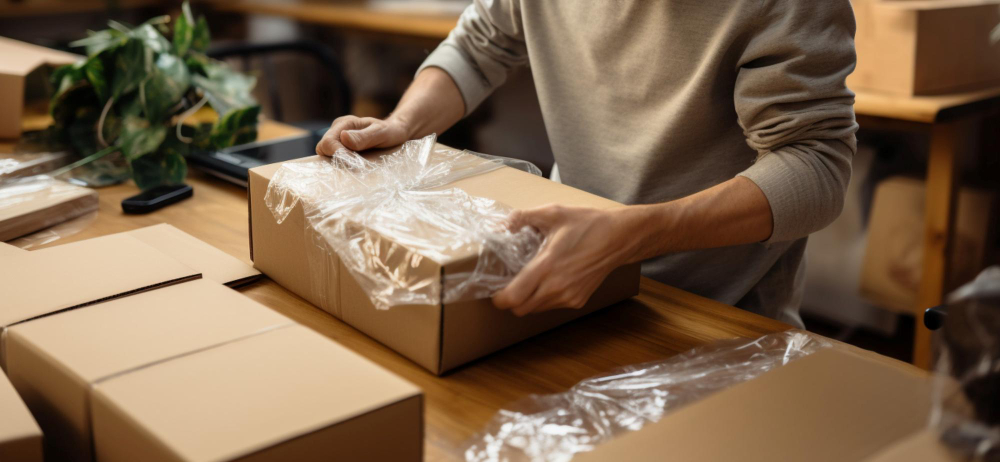Protective packaging: Know the appropriate materials to protect your shipments
- 1 What is protective packaging, and what is its importance?
- 1.1 Problems you can avoid with protection and padding materials
- 1.2 Materials for protective packaging
- 2 We review some of the most common solutions:
- 2.1 Strip
- 2.2 Foam
- 2.3 Bubble paper
- 2.4 tubular meshes
- 2.5 Anti-moisture material
- 2.6 Interior conditioners
- 2.7 The paperboard
- 2.8 Cling film
Protective packaging is essential in shipping many fragile products and in distributing food. One of the tremendous challenges for many companies is achieving sustainable packaging that simultaneously offers all the guarantees of safety and resistance for the goods to be transported and stored. To accomplish this objective in your business, you must know all the materials designed to fulfil this function.
What is protective packaging, and what is its importance?

Protective packaging UK is included inside a package to guarantee that the products do not suffer knocks, impacts, vibrations, or any other external aggression that could cause a risk of breakage or deterioration.
This packaging element also ensures the merchandise has the perfect accommodation to avoid friction, corrosion, electrostatic discharges, or any other damage during transportation and storage that may affect its good condition.
Consequently, protective packaging will become your best ally in ensuring that the most fragile products or products likely to suffer some damage are perfectly protected until they reach the hands of their consumers.
This is essential for your company’s good brand image. However, if possible returns are considered, it represents considerable financial savings.
Problems you can avoid with protection and padding materials
In general, food distribution companies and transporters know how complicated it can be to handle certain types of products to ensure they arrive quickly and in optimal conditions at their destination.
Specific packaging for food can be aesthetically perfect, sustainable and comfortable. However, it will never be truly effective if it cannot avoid the risks that its contents may suffer. Awareness of the problems that can prevent you from using protective and padding items for packaging will undoubtedly lead you to use them in your business.
Appropriate protective packaging will prevent damage caused by incorrect handling of packages during storage and transportation. Likewise, it will also facilitate distribution and marketing without causing damage that may lead to its return or withdrawal from the market. Bumps and impacts are the most common damages in these cases.
Likewise, you must remember that these solutions protect your goods from environmental phenomena such as cold, heat and humidity, with the associated risk of corrosion.
Other dangers you can avoid with appropriate protective packaging are contact with dangerous chemicals and microbiological damage caused by germs and fungi inside the shipped packages, a common danger in food packaging.
Consequently, we can say that this packaging protects the merchandise we work with and the people handling it.
Materials for protective packaging
The choice of materials to protect a product will essentially depend on the following factors:
- The packaging material: paper, glass, wood…
- The qualities of the products to be transported: humidity, sensitivity to temperature or light…
- Food also requires specific protective packaging, which must often complement its corresponding sustainable packaging.
Considering these essential aspects, we can differentiate between protections for dry non-food products, dry foods and goods at risk of corrosion. Developing materials and manufacturing processes allows us to constantly innovate and improve using the most appropriate protective packaging for each situation.
We review some of the most common solutions:
Strip
Cordon offloads and guaranteeing their correct securing during transport are essential. Packages are usually grouped and palletized to ensure more accessible and faster unit handling.
Regardless of the characteristics of the merchandise, strapping is essential to keep it organized, stable and safe at all times during transportation. This reduces the possible impacts that it may suffer.
The strap can be made of different materials, such as metal, polyester and PET. Its specific use will depend on the needs of each load.
Foam
Foam is one of the most used materials for protective packaging. Its ability to absorb impacts, separate products, and keep the most fragile surfaces safe are some of its reasons for success.
In addition, it should be noted that it is a very light and flexible material that can be adapted to most merchandise. It comes in rolls, bags, sheets, and blocks of various thicknesses to cover all protection needs.
Bubble paper
Bubble wrap allows you to wrap, pack and separate your products with the best safety guarantees against shocks and vibrations. For this reason, it is one of the most common protective packaging solutions in e-commerce shipments.
It is found in large coils and bags with adhesive closures. In all cases, it stands out for its excellent resistance.
Bubbles have different qualities and sizes. Therefore, this type of plastic must be chosen based on each product’s characteristics.
tubular meshes
They are designed to offer individual protection to extremely fragile goods with a particular volume or shape. Their main advantage is that they are very flexible. Therefore, it is easy to adapt them to each product, thus improving its protection against impacts.
Anti-moisture material
Environmental humidity may damage some merchandise throughout the storage and transportation process. Consequently, it must include anti-humidity material in its packaging to prevent corrosion. One of the most common solutions is container desiccant.
Interior conditioners
One objective of the protectors and separators used as exterior conditioners is to prevent products from moving excessively inside the box, potentially colliding, and being damaged. These elements also reinforce protection against impacts on the edges, the most delicate areas of the merchandise.
Corner pieces and silhouetted frames, usually made of foam, are some of the most common forms of this type of protector, although they can also be ordered in specific shapes and other materials.
The paperboard
Corrugated cardboard is not only the material from which boxes are made, but it also makes excellent protective packaging. If rolled up inside the packaging, it can absorb impacts very well. It can also be recycled, making it ecological and saving costs.
Cling film
It is used to palletize merchandise to be transported, especially in machines such as wrapping machines. Its application in protecting products extends to practically all marketing sectors.
Investing in protective packaging suitable for the goods that must be handled is essential to ensure that they arrive in perfect condition at the hands of consumers.

















